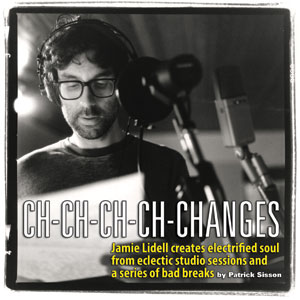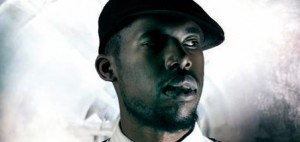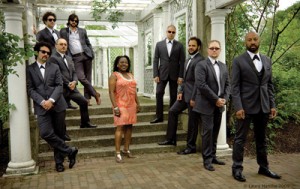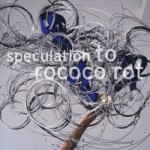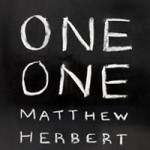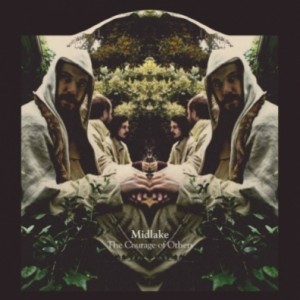Feature
Wax Poetics
Issue 42
Link
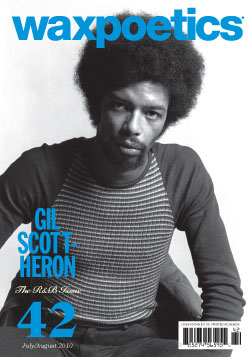
Gil Scott-Heron doesn’t suffer no fools. During an afternoon phone call from his office in New York, the 61-year-old author and performer fielded interview questions with the same combination of humor, bluntness and insight that have made his poetry, novels and lyrics so valued and influential over the last four decades. When asked about his relationship with hip-hop, he replied, “I haven’t seen hip-hop lately. I see rappers as individuals.” While I was trying to ferret out information about his forthcoming book, The Last Holiday, he told me he has 628 pages right now, and while he’d love to talk about each and every one of them, he’ll let everyone read the book themselves. Towards the end of our conversation, he said “I told you everything except my DNA. Don’t you think you have enough for a story?”
His patience may have been tested, but his capacity for storytelling was barely tapped. Born in Chicago and raised in Tennessee and the Bronx, Scott-Heron’s literary ambitions and social conscience quickly manifested themselves. After writing a novel in 1968 at age 19, The Vulture, Scott-Heron began a long musical career with the release of Small Talk at 125th & Lennox in 1970. He’s collaborated with musicians such as Brian Jackson, Malcolm Cecil and industry legends like Bob Thiele and Clive Davis. The influence of his blend of socio-political commentary and R&B and soul — as heard on seminal tracks like “The Bottle” and “The Revolution Will Not Be Televised” — has never waned and is in face considered a key element in the evolution of hip-hop. But Scott-Heron’s recent recorded output was sparse until the release of I’m New Here, which came out earlier this year. A set of modern tracks paired with the poet’s frank observations, it was a pet project of XL Recordings’ owner Richard Russell that found its genesis in Russell’s 2006 visit to see Scott-Heron at Rikers Island, where he was serving time for cocaine possession. Scott-Heron’s baritone voice may have aged, but his focus and literary integrity will never go out of style.
Read more…

